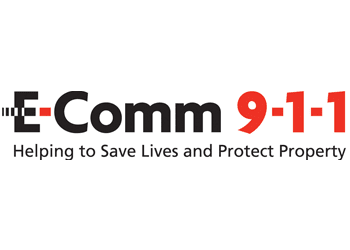COMMENT: Separating political myth from reality In B.C.
Myths are powerful things, especially when they feature forces of good (“free enterprise”) and evil (“socialists”), and evoke heroes (BC Liberals), villains (BC Conservatives) and monsters (NDP) to spin a good yarn that is rooted in fear and in distortions of blindly accepted “facts.” Great myths derive their greatest power from their retelling, to the point where lore is accepted as “truth,” half-truths are accepted as fact, and reality approximates fiction. Such is the main myth of British Columbia politics, which warrants new questioning and inspection.
As explained by the Globe & Mail’s Justine Hunter and Ian Bailey, “The right-wing forces stick together, usually, because British Columbia is by and large a province divided into only two political faiths, with the NDP or its predecessor, the Co-operative Commonwealth Federation, on one side and some type of center-right coalition on the other. When the coalition splits, the NDP wins.” Gary Mason’s summary of Premier Clark’s convention pitch echoed that argument: “Any time there is a fracture in the so-called free enterprise coalition in B.C., the NDP wins…”
Not quite true.
In eight of the Social Credit Party’s 11 wins, Liberals were also elected. In four of those cases, so were Conservatives. Of the last 30 elections in British Columbia, 27 have resulted in “free enterprise” governments and 25 of them elected representatives from at least three parties, and/or independents. In 12 elections, four or more parties won seats, not including independents. In three instances, five or more parties elected MLAs.
Since W.A.C. Bennett’s time, the BC Liberal Party was the biggest vote-splitter of them all, typically taking about 20 per cent of the vote up until 1972, without depriving the Socreds of their consecutive majority governments. The real reason the Socreds lost so badly in 1972 was not just that there were other parties; it was that the Socreds’ support plummeted to 31 per cent, even as the BC Liberals’ support also fell to its lowest level in B.C. history, while the NDP increased its vote to record levels.
Similarly, the reason the NDP was annihilated in 2001 with only 21.5 per cent support was not just that the Green Party took 12.4 of the vote; it was that Gordon Campbell’s Liberals earned 57.6 per cent of all votes, thanks to many former NDP supporters who abandoned that party. When the Socreds lost in 1991, it was because their support plummeted to 24 per cent – a level that is eerily close to where the BC Liberals stand today. Were it not for Gordon Wilson’s vote-splitting Liberals, who formed a large and strong opposition, the NDP’s majority would have been even larger.
Even in the 1996 election that the NDP won with less of the popular vote than the BC Liberals, free enterprise vote-splitting is, at best, a partial answer. If the BC Liberals had only earned another 3,340 combined votes in 1996 in Burnaby North, Burnaby-Willingdon, Cariboo South, Kootenay, Saanich South and Vancouver-Fraserview, they would have won the election with six more seats than the NDP. If Campbell’s party had even only won two of those six seats, with an extra 704 total votes there would have been a minority BC Liberal government. Organization matters.
The reason the NDP now enjoys some 46-49 per cent support is not just because the BC Conservatives are “siphoning off” votes from the BC Liberals, or that the Green Party is attracting its own share of support. It is that more voters than ever are prepared to vote for the NDP, including more than a handful “free enterprisers.” It is because the old “free enterprise versus socialist” dichotomy is itself an aging myth that is not wearing well with younger voters or in the modern Canadian liberal context. That entire ideological ethos is largely a false distinction that died with the Cold War and that is increasingly less relevant in driving voter choice.
The fact is, if the Green Party does not run a full slate of candidates in 2013, which seems likely, the NDP’s voting universe will suddenly reach well beyond the 50 per cent mark that “free enterprisers” claim to own as their birthright. A majority beats a minority every time. The BC Liberals’ main challenge is to win back votes from the NDP as well as from the other parties, including the Conservatives and Greens. The only reason the Clark government’s fortunes look so dire at present is because it has driven voters away to other parties across the political spectrum that has cut its support coalition in half. What history mainly shows is that no governing party can win re-election with only 21 or 24 or 31 per cent support – especially if any competitor enjoys the support of close to an absolute majority of decided voters.
The main reason why even more voters are not now “parked” with the BC Conservatives is not because of fear of the NDP. It is because Mr. Cummins’ party has revealed itself as a marginal force that is still not ready for primetime. It has alienated more voters than it has attracted with weak leadership, extremist tendencies and internal factionalism. Many of those traditionally conservative-leaning voters will “hold their nose” and vote for the NDP unless they are given new positive reason to return to the BC Liberal fold.
Myths are made to be reinvented. The real evil we do is to vilify agents of political choice and to vote in fear of ideological “monsters” largely of our own making; it is in not demanding better of our political leaders and in allowing our actions to be dictated by negative options more than by positive visions and platforms in which we can honestly believe and trust.
[Martyn Brown is the author of the new eBook, Towards A New Government In British Columbia, available on Amazon. He was former B.C. Premier Gordon Campbell‚s long-serving chief of staff, the top strategic advisor to three provincial party leaders, and a former deputy minister of Tourism, Trade & Investment in British Columbia.]

























